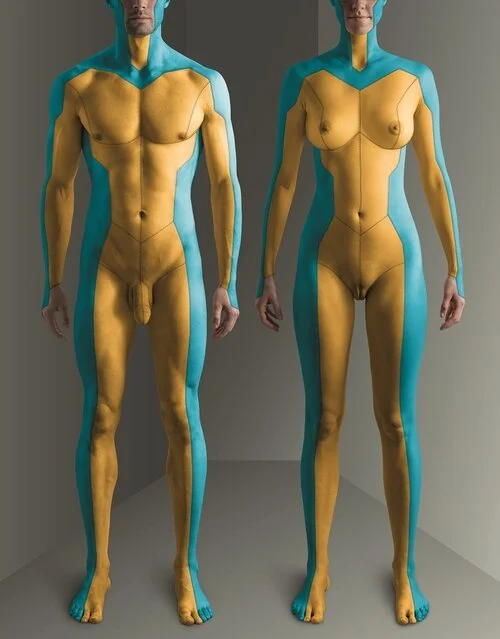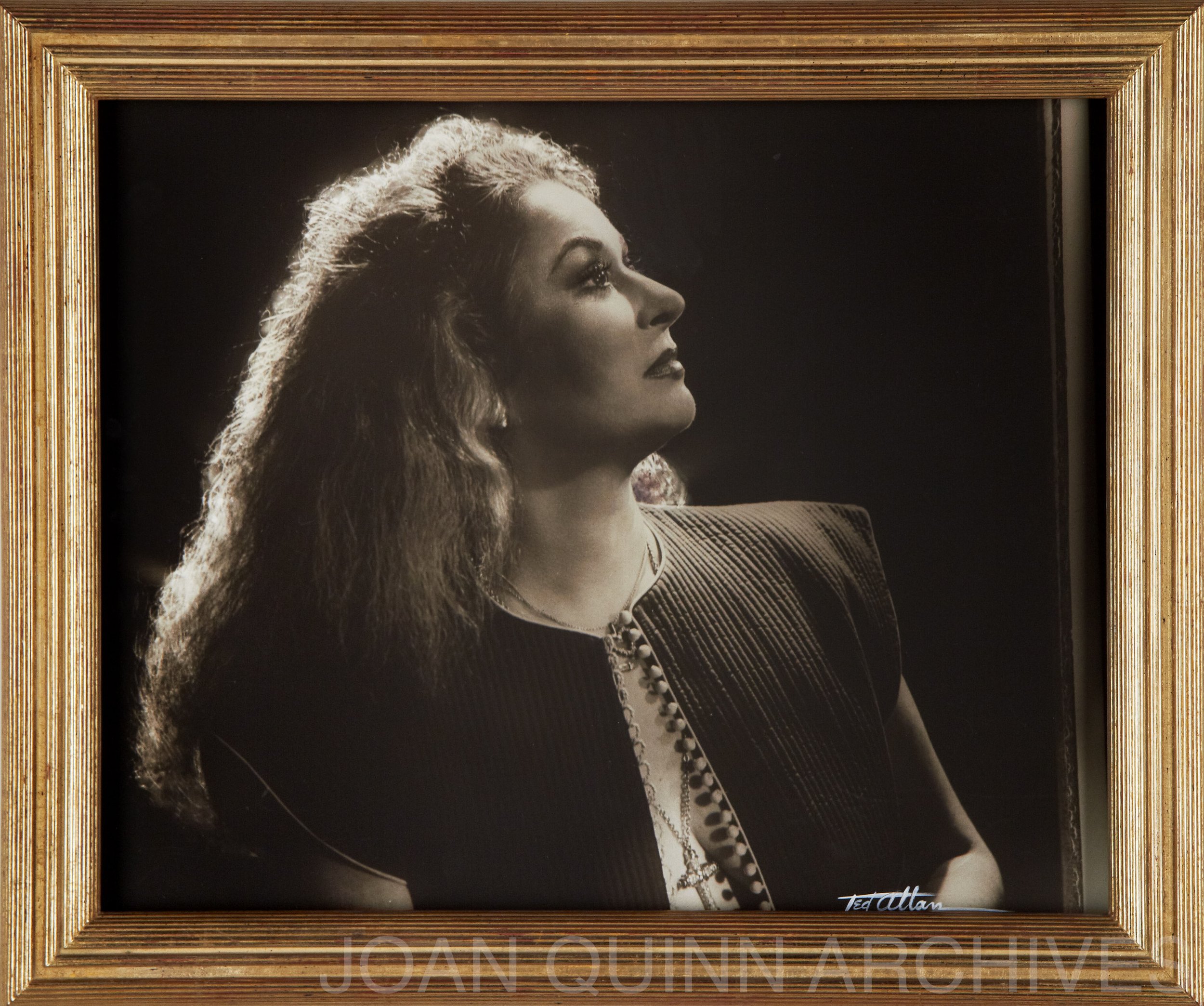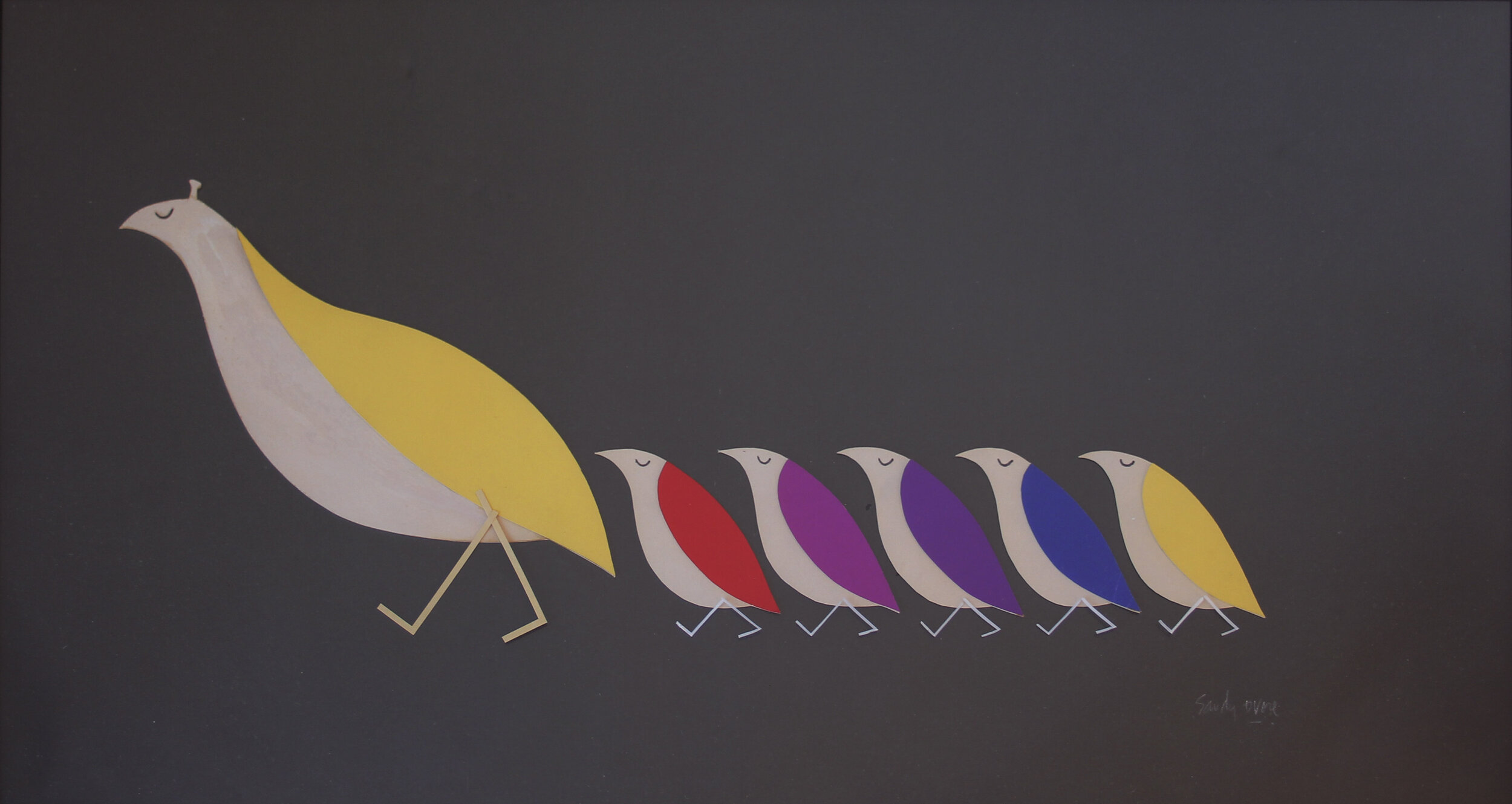Episode 39: Allen Jones
Allen was born in Southampton in 1937 and grew up in the London suburbs. He studied painting and lithography at Hornsey College of Art between 1955 and 1959, after which he entered the Royal College of Art alongside what was to become the first generation of British pop artists. After teaching art and exhibiting for a few years, in 1964 he moved to New York for a year, before going on an extended tour of the United States by car. This trip proved to be incredibly influential in his career—connecting him with the American pop art scene, helping him develop a more hard-edged painting style, and introducing him to fetish imagery. In 1970 he premiered his most controversial works—sculptures of pneumatic female mannequins as furniture: a chair, a hat stand, and a table. The feminist backlash made him into a household name. One of Britain’s most famous living artists, at 85, he continues to paint everyday day in his large barn-like studio in the beautiful English countryside.
Episode 36: Steven Heller
Fashion and cultural historian Laura McLaws Helms speaks with art director and author Steven Heller. An incredibly creative and prolific individual, Steven is the author, co-author or editor of over 200 books on graphic design, illustration and political art. I interviewed him in the fall, around the publication of “Growing Up Underground: A Memoir of Counterculture New York,” which details his teens and early 20s working in the counterculture press. At 17 he became the art director at the counterculture weekly, the New York Free Press. He then went on to work for Screw, the East Village Other, Rock, Gay, Mobster Times, and Evergreen Review, before being poached at age 24 by the New York Times to be the art director of the Op-ed page. Steve was an art director at The New York Times for 33 years; 3 years on the Op-ed page, before moving to the Book Review. He became a senior art director in 1980. Steven is the co-founder and co-chair of the MFA Design Department and co-founder of the MFA Design Criticism, MPS Branding, MFA Interaction Design, and MFA Products of Design programs at SVA. Heller is also the recipient of the Smithsonian Institution National Design Award for "Design Mind," the AIGA Medal for Lifetime Achievement and other honors.
Episode 34: Emanuel Schongut
Manny Schongut has had a long and diverse career as an illustrator. From upstate New York, Schongut studied and taught at Brooklyn’s Pratt Institute before becoming a freelance illustrator. During the 1960s, Schongut became known for his distinctive book covers, often for science fiction and crime novels, that brought together watercolour and pen-and-ink in intriguing graphics. In the early 1970s, he was represented by Push Pin Studios, the legendary graphic design and illustration firm founded by Milton Glaser and Seymour Chwast. Taking a more traditional figurative tack, Manny’s work appeared in New York magazine, the New York Times, Vogue, Town & Country, Redbook, and many other publications. Starting in the 1970s, Schongut began working on children’s books—so far, he has illustrated over twenty, and been the author of five of those. Based in San Francisco since the early 1990s, 86-year-old Manny continues to create.
Episode 32: Joan Agajanian Quinn
Joan Quinn has been a major force in the Los Angeles art scene for 70 years, as a collector, promoter, advocate, and friend to generations of artists. While amassing a large “accumulation” of art, her passion and collecting zeal also made her a muse for artists—what started as some artist friends painting and sculpting her portrait in the seventies, has now grown into a collection of over 300 portraits of Joan. In the late 1970s, Andy Warhol asked her to become West Coast editor of Interview magazine; a role she later held with several other publications. From the mid-1980s until 2020, Joan hosted public access TV shows where she interviewed artists and creatives.
Episode 31: Rory Trifon, The Estate of Richard Bernstein
Known for his saturated, highly glamorous covers for Interview magazine, Richard Bernstein was born in New York in 1939; he passed away from AIDs-related complications in 2002. Richard created the cover for every Interview magazine up until Warhol's death in 1987—a prodigious volume of work that serves as an archive of 1970s and 1980s celebrity culture. In the late 1970s, Richard Bernstein became friends with Grace Jones, helping to mold her visual identity as she first emerged as a singer. The duo continued to work together for many years. Richard was also an early innovator in digital art.
Rory is Richard's nephew and the one entrusted with maintaining and carrying forward his legacy. In our conversation, he provides a short biography of Richard, his artistic career and his relationship with Andy Warhol. We then speak about what is like to run an artist’s estate, what it entails, and the process of archiving. Rory was instrumental in the creation of a coffee table book on Richard, Starmaker, which was published by Rizzoli in 2018; he has also loaned Richard’s work to numerous museum exhibitions and collaborated with a number of fashion and interiors brands.
Episode 25: Meryl Meisler
Meryl Meisler is an acclaimed photographer known for her street and documentary work. Meisler began photographing in the mid-70s, focusing on the Jewish community in her hometown on Long Island as well as the nightlife scene in NYC. After becoming an art and photography teacher at a public school in Bushwick, Brooklyn, she continued to shoot the world and people around her. Following her retirement in 2007 that she began to delve into her old, boxed-up contact sheets and negatives—revealing a New York that was long gone, captured in a totally individual and unique manner. Since then Meisler’s photographic career has had a renaissance; publishing three books of her photographs—centering mostly on Bushwick, disco and Long Island suburbia—and has participated in countless gallery exhibitions.
Episode 22: Charlie Morrow
Charlie Morrow is a sound artist, composer, musician, producer, conceptualist, performer, magazine editor and former jingle writer. He joins host Laura McLaws Helms to discuss all aspects of his life, work and creative process. A true multi-hat, his creative projects have included chanting and healing works, museum and gallery installations, large-scale festival events, radio and TV broadcasts, film soundtracks, advertising jingles and commercial soundscapes. Among his many projects he organized a Summer Solstice celebration annually in NYC from 1973 to 1989.
Episode 21: Barbara Nessim
An artist, teacher, creative visionary, Barbara Nessim is a completely inspiring soul. A highly successful commercial artist for several decades, Barbara was one of very few full-time professional women illustrators working in the United States during the 1960s. In the 1980s Barbara became an early pioneer in computer art—one of the few classically trained artists at the time who saw the value in wedding fine art with computer technology.
Episode 18: Robert Farber
I had the opportunity to chat with famed photographer Robert Farber in his Upper East Side studio. Rising to prominence as a nude and fashion photographer in the mid-to-late 1970s, by the late 1980s posters of his photos were everywhere and are a defining memory of that time. Robert developed his signature soft focus aesthetic in the early 1970s by experimenting with different films, filters and development processes with the goal of creating a painterly effect on film. A must listen if you interested in photography, Robert opens up about the many aspects of his career as well as the sometime difficulties of balancing this hectic lifestyle with a family.
Episode 16: Mel Odom
I had the opportunity to sit down with acclaimed illustrator Mel Odom. Known for utterly captivating and totally unique drawings suffused with a beauty and mystery that were unmatched, Mel worked extensively in the 1970s and 1980s for publications like Playboy, Time, Viva, OMNI, and Blue Boy. In 1995 he launched his labor of love—Gene Marshall, a fashion doll based on classic Hollywood starlets, who took the toy world by storm. Now focused primarily on painting, Mel is a total Southern gentleman and a joy to speak with. A must listen for anyone interested in art, New York in the 1970s and 80s, the gay experience during the early years of AIDs, and dolls.
Episode 11: David Lance Goines
For this episode I spoke with the graphic artist David Lance Goines at his printing studio in Berkeley, California. Incredibly multi-talented, Goines is an artist, calligrapher, typographer, printing entrepreneur, and author, yet he probably best known for the posters he illustrated for local Berkeley businesses, which have been reproduced and sold worldwide. Most notably would be the work he has done for the legendary Chez Panisse, which was opened by his former girlfriend Alice Waters—his book covers and annual posters for the restaurant helped define the visual identity of it for food lovers around the globe, in much the same way his other posters have created the visual identity of Berkeley.
Episode 10: Mel Ramos
Four months before he passed away, I had the amazing opportunity to sit down with the famous pop artist Mel Ramos at his home in Oakland, California. Ramos gained fame and notoriety in the mid-1960s for his paintings that combined commercial goods and idealized female nudes. Led by his passions and by the importance he placed on family and a good work/life balance, Ramos (like many other subjects of this series) has been able to create a life of intention and beauty while also giving joy to his many fans.
Episode 09: Sandy Dvore
Though you might not recognize Sandy Dvore’s name, you would know his work. As a titles designer, he created the opening credits for television shows that helped shape American culture—The Partridge Family (1970 - 1974), The Waltons (1972-1981), The Young & the Restless (1973-1988 drawings and 1984-1999 logo). By developing the visual language of TV and film credits in the 1960s, 70s and 80s, Sandy’s work helped create the lens through which we see America in those decades. This conversation centers not just on the highs of achieving career success but also the sadness of what comes after—a meditation on the creative process, the ups and downs of success, and, I think, also a worthwhile antidote to our culture’s obsession with youth and newness.














